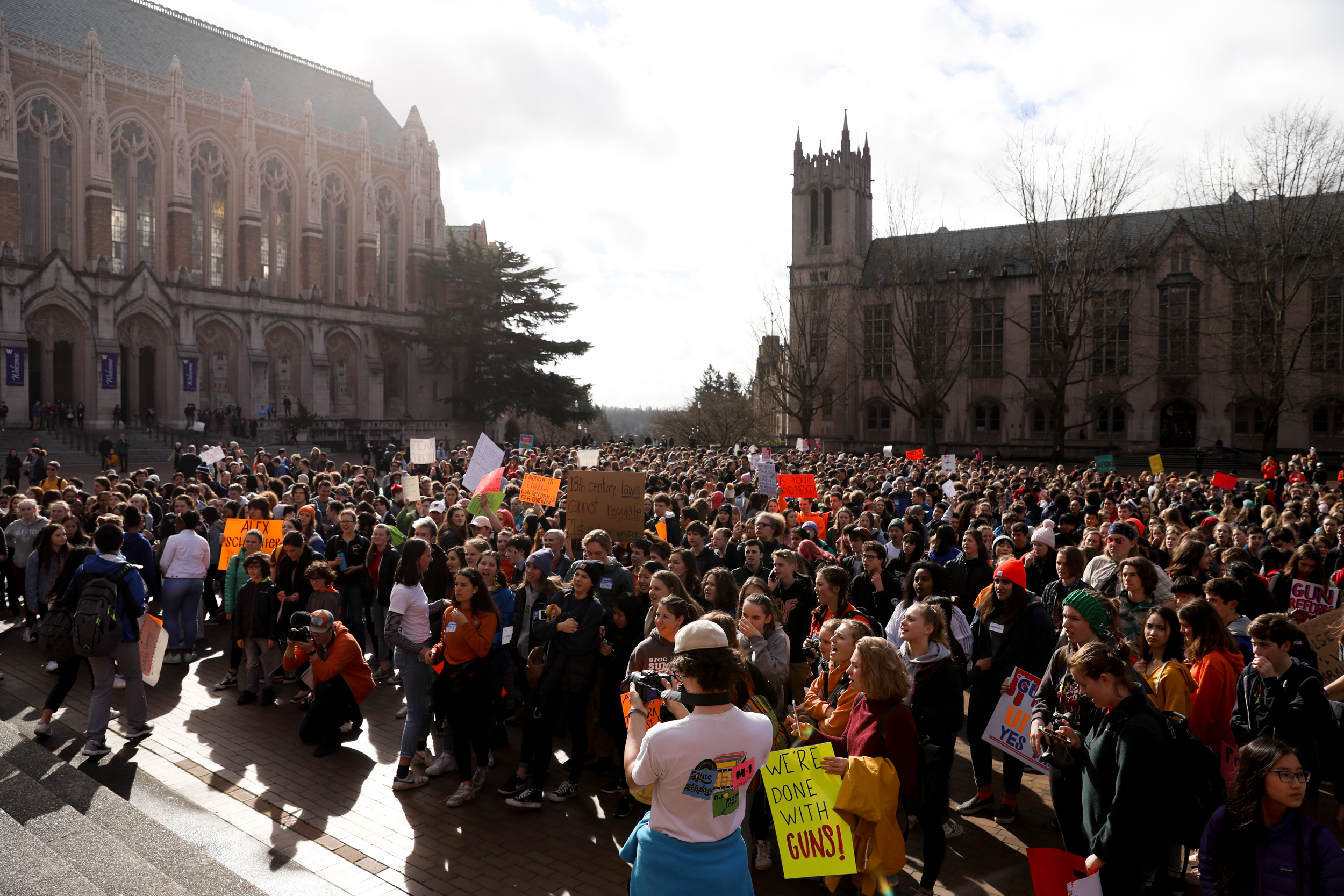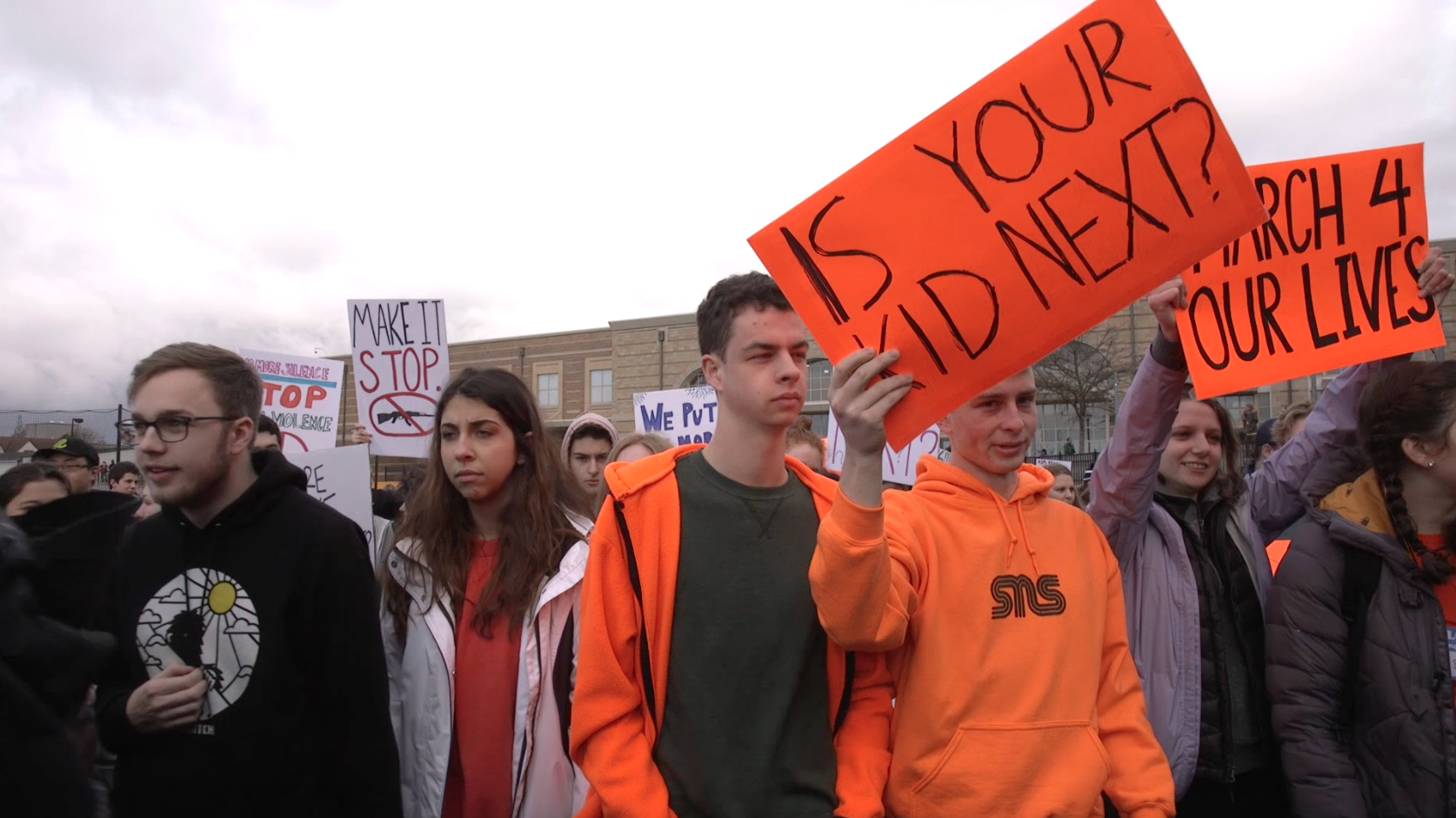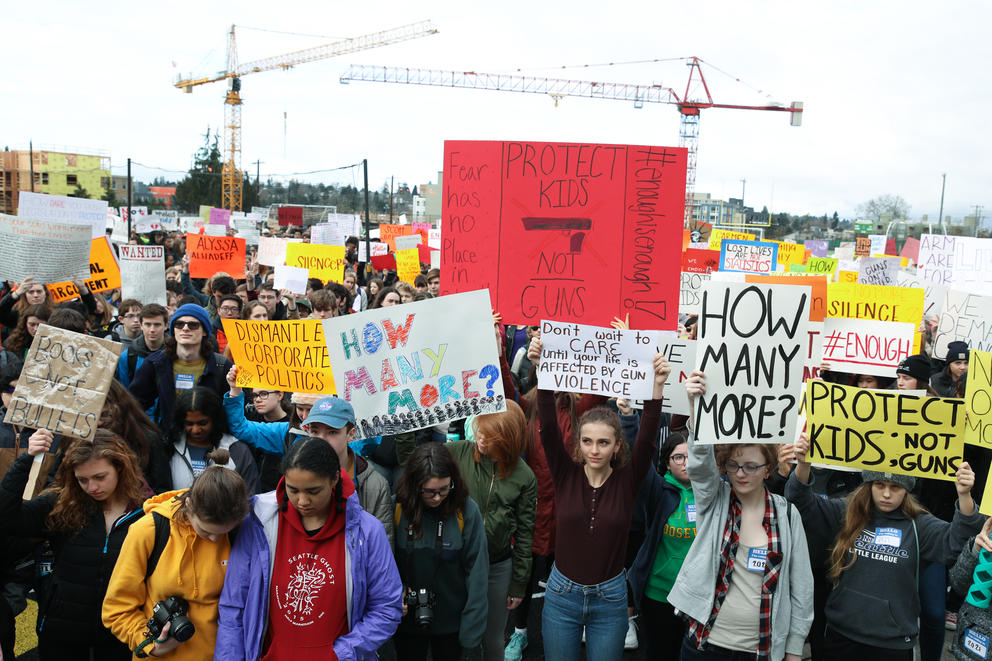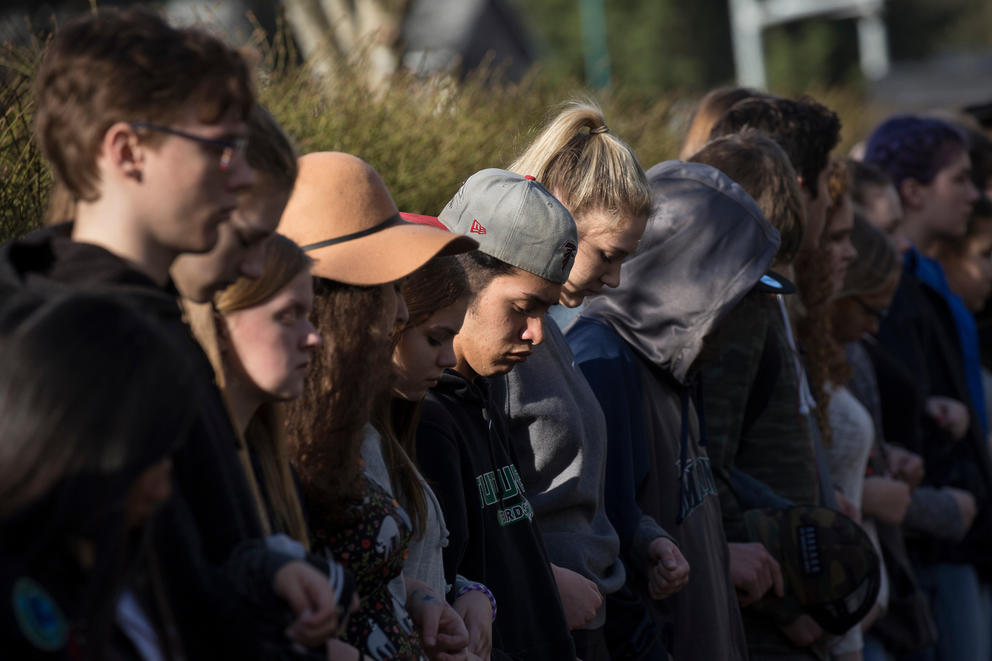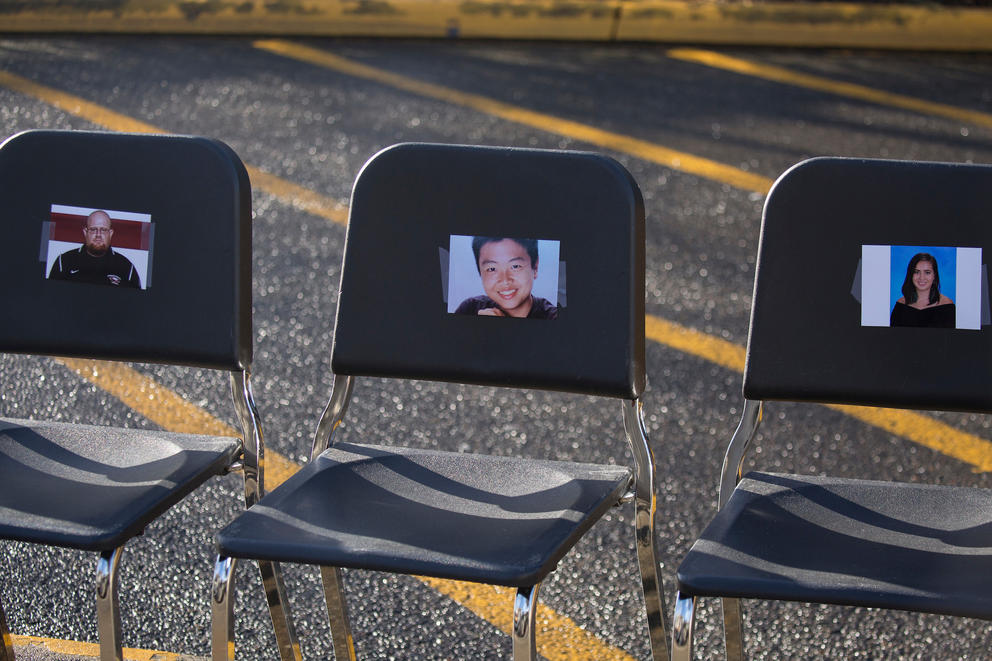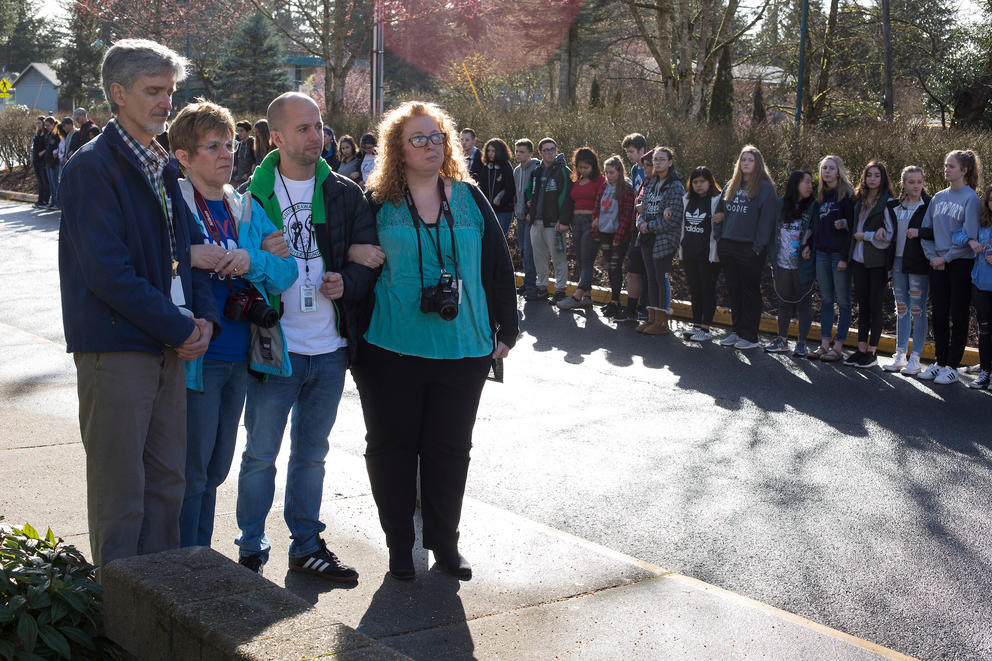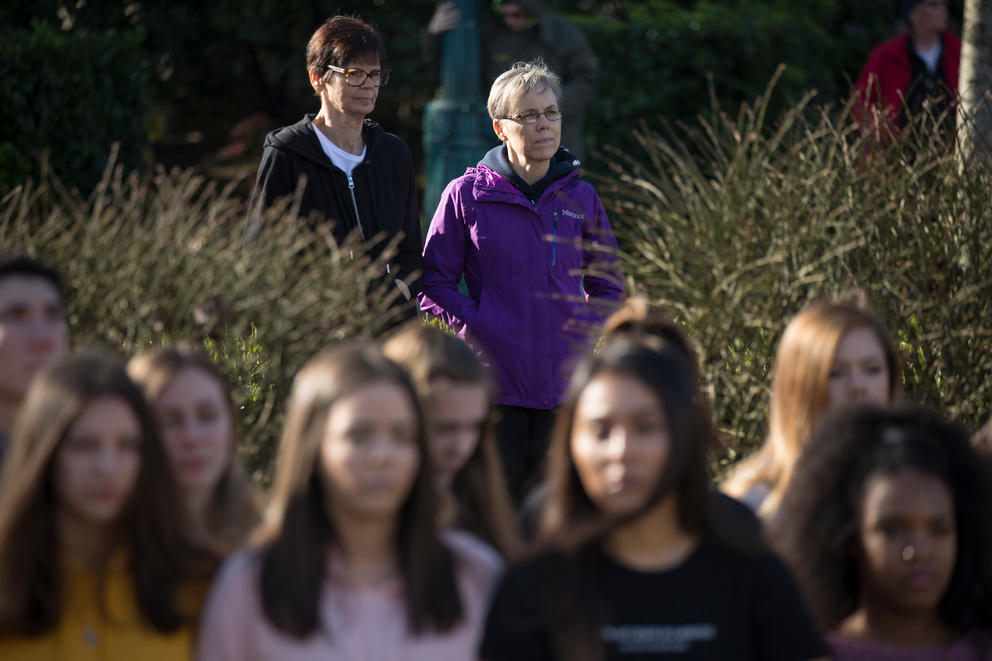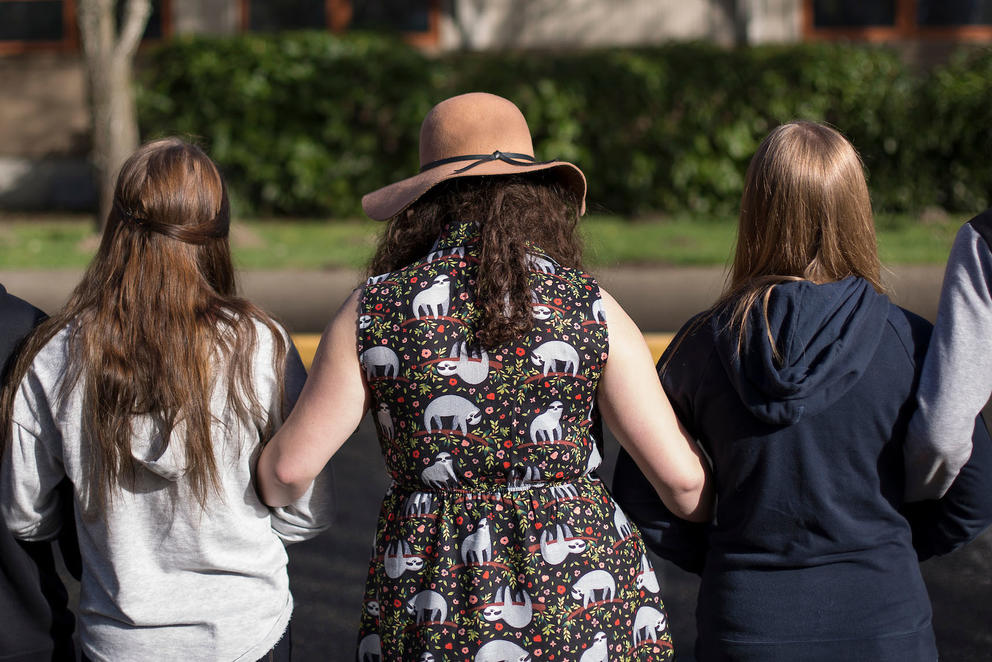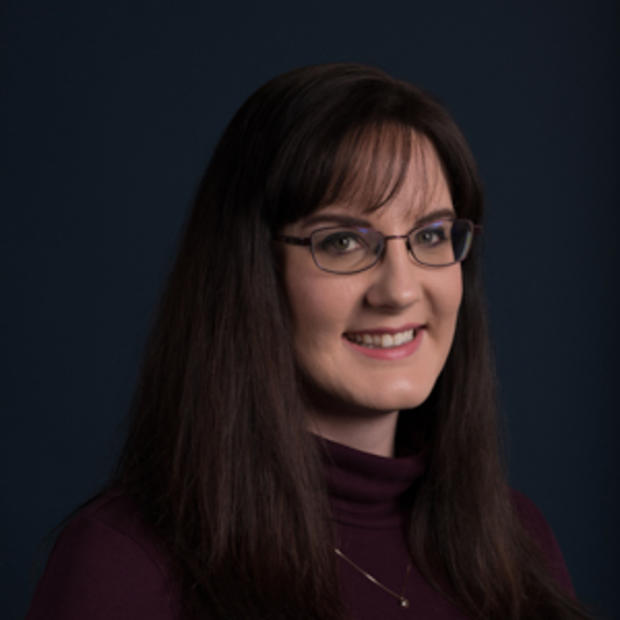Joining some tens of thousands of their peers across the country, the majority of the students walked out to send a message to Congress on gun control; others simply to memorialize the 17 people shot and killed at Marjory Stoneman Douglas High School in Parkland, Florida exactly one month ago.
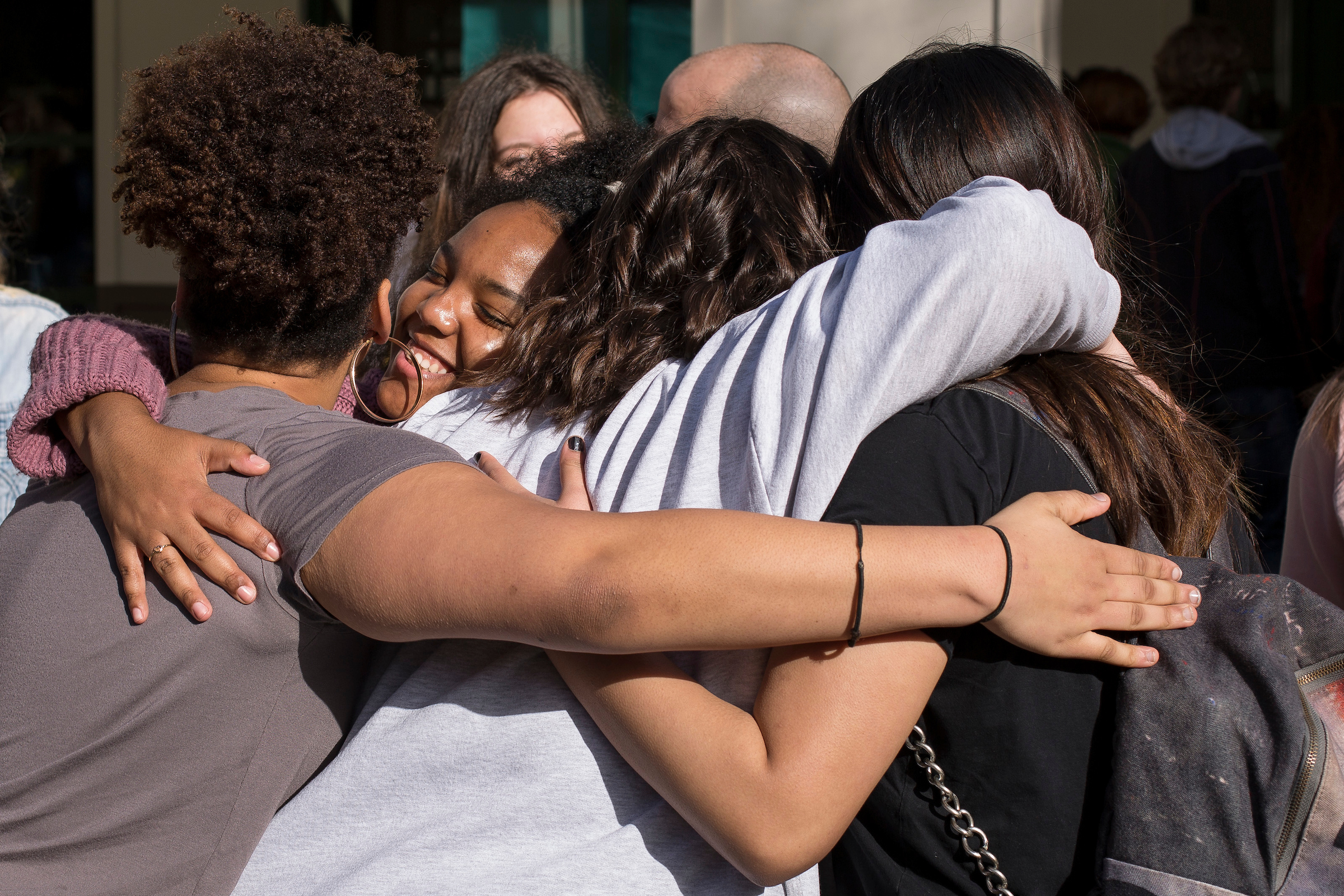
“We are tired of waiting for adults to take action while we continue to suffer and lose our friends, our classmates, our teammates and our peers,” said Madison Thomas, a 20-year-old Seattle native who is among the 13 young leaders of the Women’s March Youth Empower group, which helped coordinate Wednesday’s massive protests across the country.
For most of its participants, the National School Walkout underscored a call for gun reforms, including a ban on assault weapons and high-capacity magazines, an expansion of background checks to all gun sales and a rejection of proposals to bring more guns into schools, like President Trump’s NRA-approved plan to arm school teachers.
“We’re taking action because Congress won’t,” Thomas told Crosscut. “We demand change now from Congress — or, come Nov. 6, they won’t be in office anymore.”
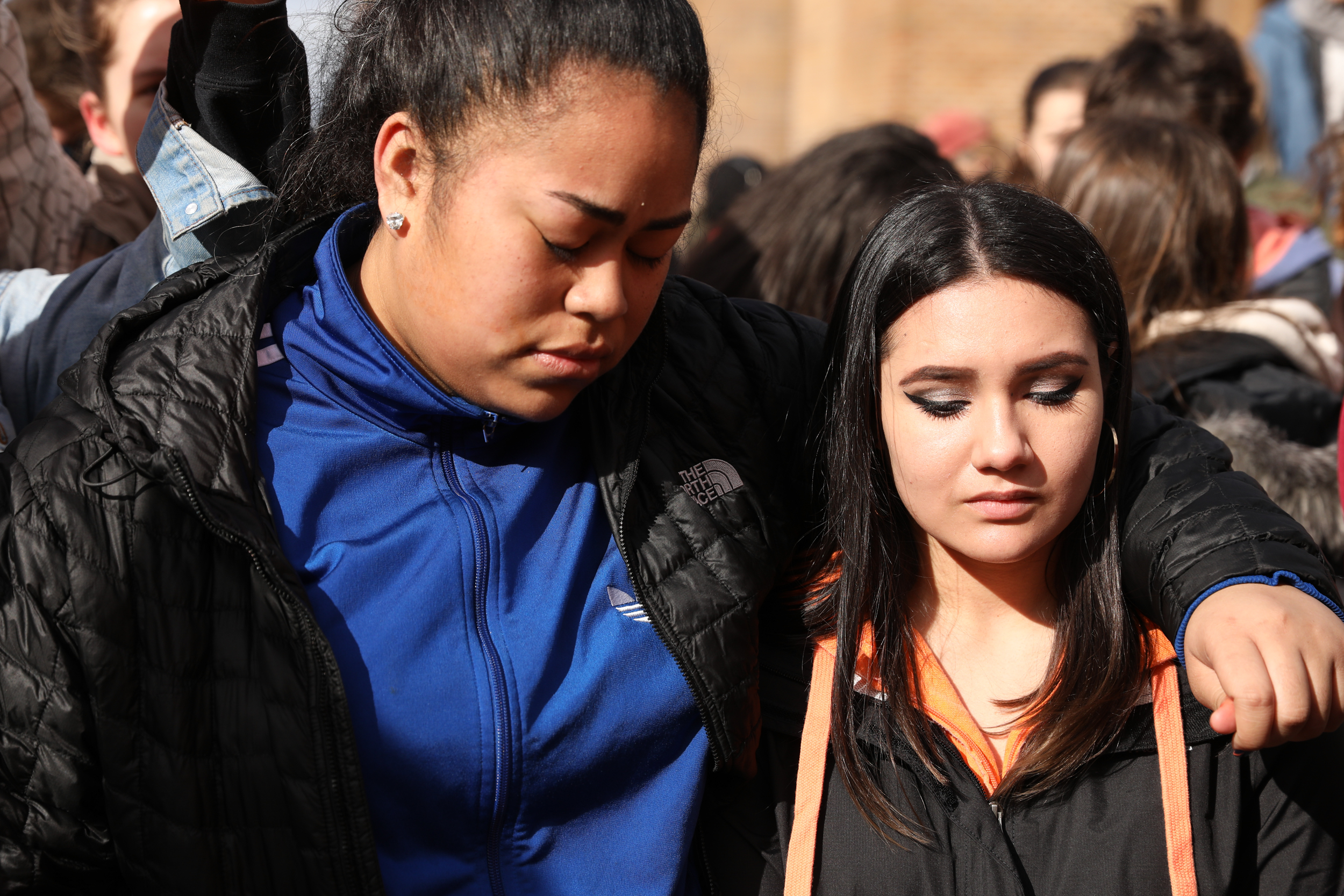
In Seattle, students carried the message of gun-control reform with rallies that included an appearance by Mayor Jenny Durkan on the University of Washington campus and a visit by Gov. Jay Inslee to Ballard High School.
But not all students around the state walked out as a form of political protest.
In one of Puget Sound’s semi-rural, more conservative suburbs, student organizers in Tumwater toed a more cautious line, opting for unity over politics. “Our main message is to honor the lives of those who were lost,” said Brad Blackburn, a junior at Tumwater High School. “That could have been anyone. So, our main focus is emphasizing school safety.”
Gathering to remember
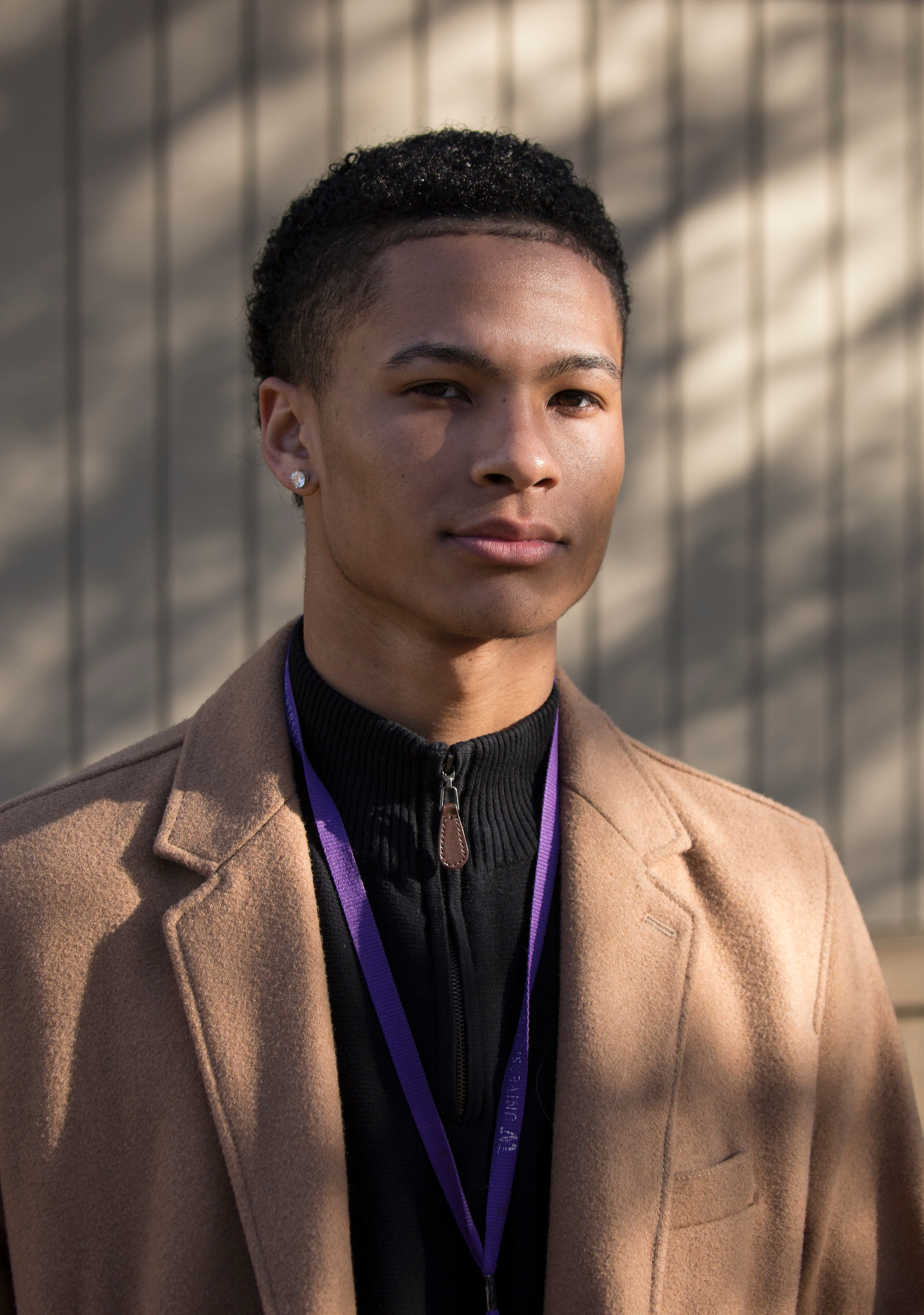
Tumwater High School, south of Olympia, draws from the rural parts of Thurston County. Tumwater itself is suburban, but students bus in from as far south as Littlerock off I-5’s exit 99. In sharp contrast to the progressive tilt of the state capital just 10 minutes north, Trump “Make American Great Again” hats are common among its approximately 1,200 students. During an assembly at nearby Bush Middle School last Veterans Day, some students flew a Confederate battle flag.
Gun culture here is strong; the Tumwater High School rifle club receives $19,000 a year from the National Rifle Association, according to the Associated Press. The club’s website boasts of its NRA support.
Blackburn, a Tumwater native, is the exception more than the norm: He’s Black in a mostly White school, pro-gun control in a gun-friendly area, and he knows people talk about him and sometimes scoff at what they view as his Second Amendment opposition. But years of speaking his mind have given him a stiff backbone and the fortitude to help organize the walkout.
"Over time people have tried to bash me about it. But if you stand your ground, bullies tire,” Blackburn said.
Blackburn was lonely once, the feeling compounded by both his skin color and his courage to speak out. “When you’re walking down the hallways, you know what people are thinking,” he said. “People don’t like what you’re doing. At times, I feel very isolated.”
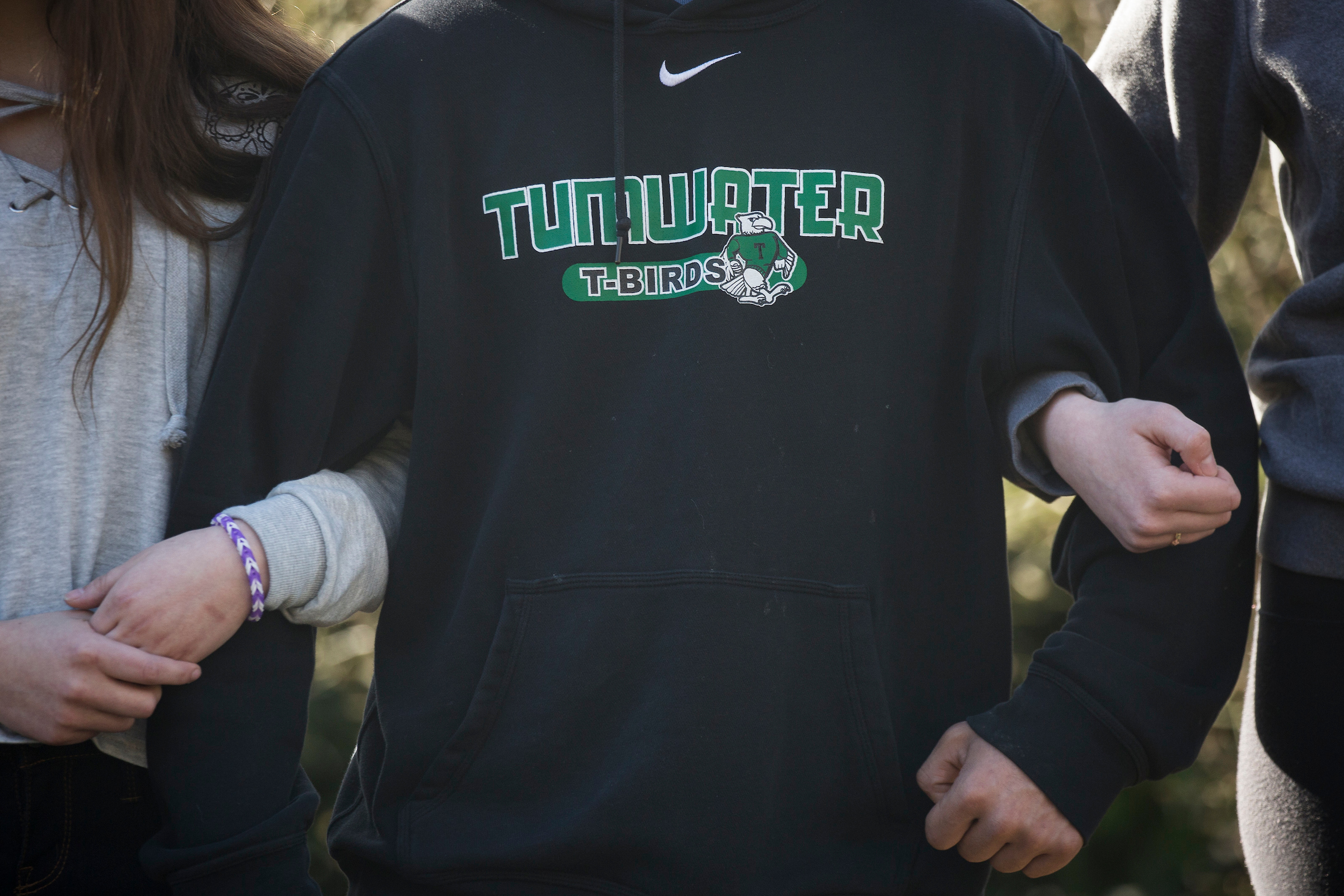
But he’s found a community in recent years in the school’s Cultural Awareness and Student Activism clubs, two separate groups but with nearly identical members. It was a place where others who felt isolated could meet and celebrate diversity where it may otherwise lack.
It was in these meetings that plans for the walkout first formulated. And as they planned, they faced some backlash from other students who saw it as a protest against the Second Amendment.
Amiya Bernard, a recent California transplant who’s the president of the Cultural Awareness Club, insists that was not the purpose of Wednesday’s walkout. But regardless, she said, “If you care about this stuff, you might lose friends.”
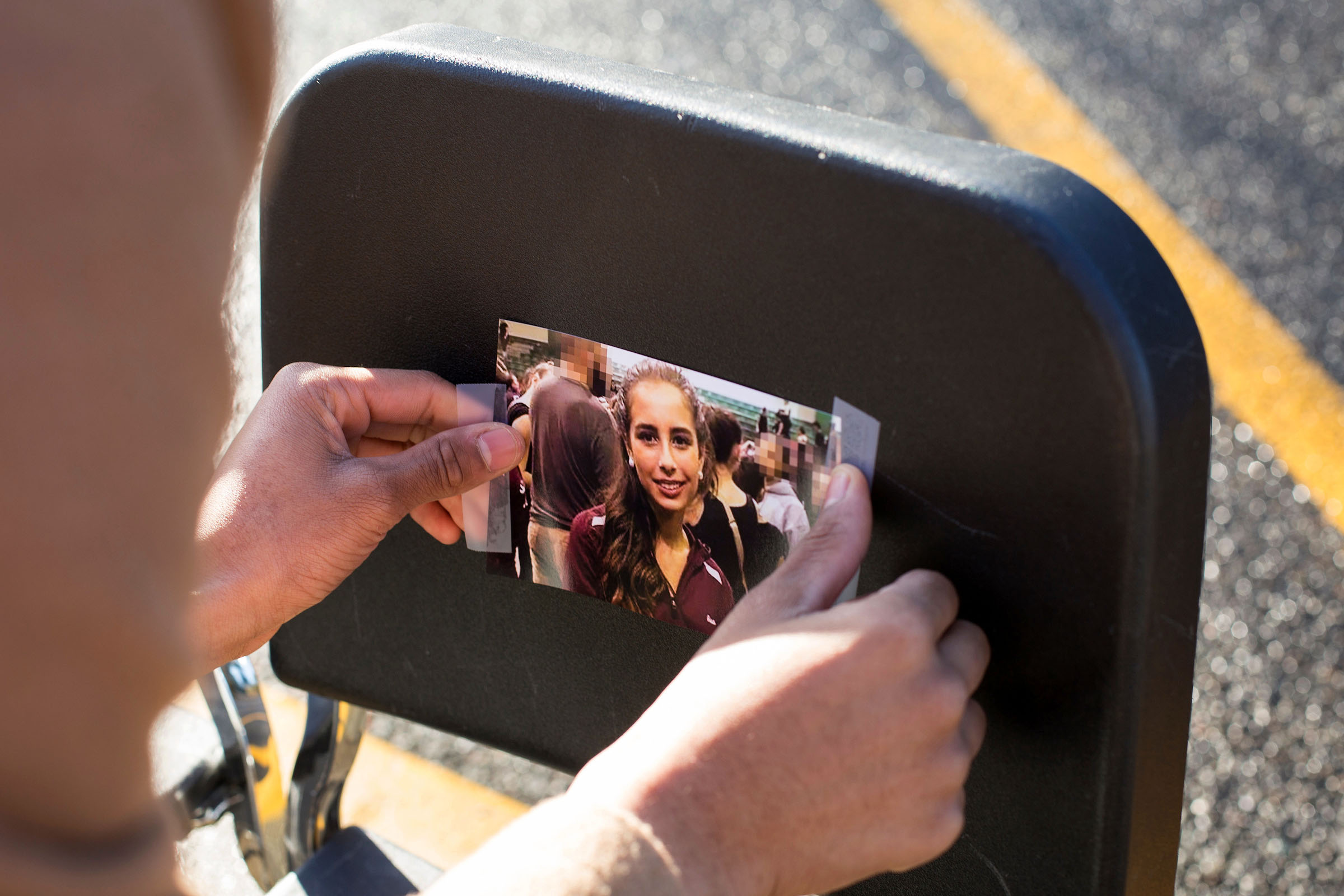
Speaking before the 10 a.m. start of the event, she said that even if no one else showed up, the clubs’ walkout would be a voice for students too scared to speak out.
As it turned out, more than 200 students filed out of the school’s front door, gathering behind 17 empty chairs placed outside, each one with a picture of someone who was shot dead in Parkland. As they locked arms in silence for 17 minutes, students who remained inside the school looked on through the windows.
When the silence finished and students quickly returned to their classrooms — administrators adjusted the schedule to allow for the walkout — the organizers were elated, hugging each other, their teachers and even the principal, Jeff Broome. Aisha Thomas, a junior, said: “The fact that 200 people came is insane.”
Students from various high schools observe a moment of silence while holding signs in the air at Roosevelt High School. They all participated in a student walkout protesting gun violence in Seattle, Mar. 14, 2018. The walkout led its way from the school to Red Square at the University of Washington for a rally that included local politicians and youth activists. (Photo by Matt M. McKnight/Crosscut)
Marching by the thousands for gun reform
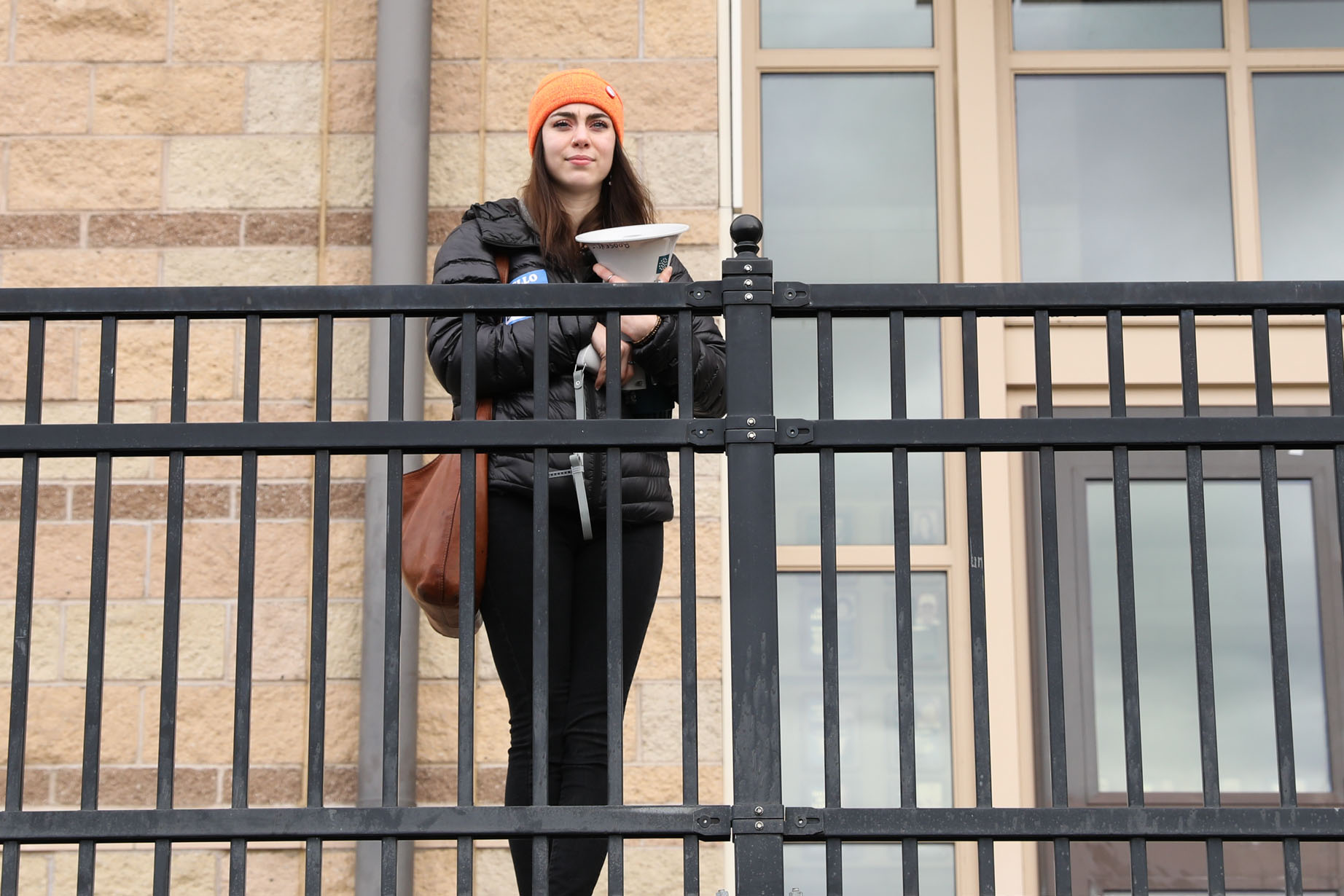
In northeast Seattle, a few thousand students from as many as seven different high schools gathered at Roosevelt High School on Wednesday morning, eagerly embracing their megaphone in calling for an end to gun violence through gun-control reforms.
Together — shouting chants and holding colorful protest signs — they marched 1.5 miles from the school to convene in a massive rally at the University of Washington’s Red Square.
Student organizers didn’t want to just stage the 17-minute walkout as the national movement called for. “This deserves more than 17 minutes,” said Zach Heffron, an 18-year-old senior at Nathan Hale High School who helped mobilize his peers.
In the days after Parkland, Heffron, Roosevelt senior Gabe Rosenbloom and Roosevelt junior Scout Smissen led the charge to organize the school walkout — drawing inspiration from the Florida school student activists who drew national attention with their #NeverAgain movement.
“It’s always been that this happens and nothing comes from it — we’re numb to it,” Heffron said. “But this could be the one that we actually get the momentum on our side, we actually get something done and, as students, we raise our voices.”
Rosenbloom, 18, said state and federal lawmakers should take note of the students walking out across America, because if the students aren’t at voting age already, they will be soon. “Hear our voice now because soon, you work for us!” he said in a speech at the UW rally that capped off their morning protest.
Students from various high schools gathered at Roosevelt High School to participate in a student walkout protesting gun violence in Seattle, March 14, 2018. The walkout led to a march to Red Square at the University of Washington for a rally that included local politicians and youth activists. (Photo by Matt M. McKnight/Crosscut)
Elementary students in kindergarten through fifth grades from University Cooperative School cheer on high school students as they march from Roosevelt High School to the University of Washington in a student walkout protesting gun violence in Seattle, March 14, 2018. (Photo by Matt M. McKnight/Crosscut)
Students from various high schools gathered at Roosevelt High School to participate in a student walkout protesting gun violence in Seattle, March 14, 2018. The walkout led to a march to Red Square at the University of Washington for a rally that included local politicians and youth activists. (Photo by Matt M. McKnight/Crosscut)
Several students who marched said the Parkland shooting hit home for a simple reason: “Something like that could happen at Roosevelt, and the idea of that scares me,” Rosenbloom told Crosscut. “And that shouldn’t have to scare me when I’m in a place of learning.”
But the motivations for some marchers and organizers was even more personal. The walkout came just days after a Roosevelt High student was hospitalized last weekend after she was shot in a reported act of neighborhood gun violence. And in that same neighborhood almost six years ago, five people were shot and killed in a mass shooting at Café Racer.
“It was one of the most gruesome Seattle moments,” recalled Smissen, 17, who said she lost a “dear friend and a neighbor” in that tragedy. “For me, it’s not why I’m marching, but why wouldn’t I? There’s no reason not to be active in a time like this.”
As the crowd of kids flooded off the Roosevelt High football field and down 15th Avenue Northeast, they were cheered on and applauded by onlookers. A group of elementary school students from the University Cooperative School held up handmade signs and gave the high school students high fives as they marched past, one person from an apartment yelling “You rock!” to the crowd and other adults lining the sidewalks in visible awe of the students.
“I’m just so impressed with the youth leading us,” said Cedar Burnett, who graduated from Roosevelt High in 1997 and marched on Wednesday with her niece, who’s currently a junior at the school. “I think the time has really come for common sense gun laws and we grown-ups have really failed in getting that passed. I’m so happy to take a backseat to the kids and really follow them and their leadership. It’s phenomenal.”
